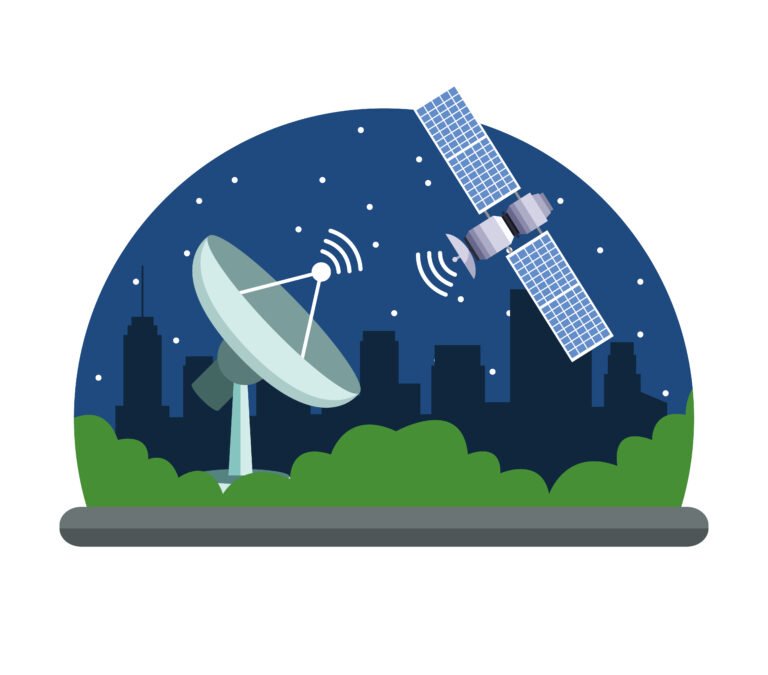In the fast-evolving world of
website development services, companies are constantly seeking innovative ways to deliver faster, more scalable, and cost-effective solutions. One such trend reshaping the industry is
serverless architecture. By eliminating the need for server management and offering on-demand scalability, serverless architecture provides an agile way for any
software development company to streamline the development process.
This blog will explore what serverless architecture is, its benefits, and how it can be used to enhance
website development services.
What is Serverless Architecture?
Serverless architecture is a cloud-based computing model where developers build and deploy code without managing physical servers or infrastructure. Although the term “serverless” might suggest the absence of servers, it means that the cloud provider takes care of the underlying infrastructure, enabling developers to focus purely on the code and application logic. Popular platforms offering serverless services include
AWS Lambda,
Microsoft Azure Functions, and
Google Cloud Functions.
Serverless architecture enables
website development services to run backend functions on demand, scaling automatically based on user traffic. Developers can also reduce costs since they only pay for the computing resources used when the code executes.
Benefits of Serverless Architecture in Website Development Services
Serverless architecture offers significant benefits for
website development services by eliminating server management, reducing costs, and enabling automatic scalability. It empowers any
software development company to focus on code, delivering faster, more flexible, and high-performance websites.
1. Reduced Operational Costs
With serverless architecture, companies avoid the need for expensive infrastructure and IT management. The
software development company only pays for the exact time and resources needed to execute a function, helping to optimize project budgets.
2. Automatic Scalability
Serverless platforms scale automatically to handle any increase or decrease in demand. Whether your website experiences low traffic or a sudden surge, the architecture ensures smooth operations without manual intervention. This makes it a powerful solution for
website development services that require dynamic resource allocation.
3. Faster Time to Market
Serverless architecture removes the burden of server management, allowing developers to focus on writing code and delivering functionality faster. This reduces the development time, giving
software development companies an edge in launching projects rapidly.
4. Enhanced Security and Maintenance
Since cloud providers manage the servers, they also handle security updates, monitoring, and infrastructure maintenance. This offloading of responsibilities ensures that
website development services remain secure and up-to-date without requiring in-house maintenance teams.
5. Improved Performance and Flexibility
Functions in a serverless environment are isolated and lightweight, ensuring faster response times. Additionally, developers can break applications into smaller functions and deploy them independently, enhancing the flexibility of
website development services.
How to Implement Serverless Architecture in Website Development Services
Implementing serverless architecture in
website development services allows developers to build scalable, efficient, and cost-effective web solutions by offloading infrastructure management to cloud providers. This approach ensures faster deployments, better flexibility, and seamless integration with modern web technologies.
1. Choose the Right Serverless Platform
Before implementing serverless architecture, select a platform that aligns with your project’s needs. Some popular platforms for serverless development include:
- AWS Lambda
- Microsoft Azure Functions
- Google Cloud Functions
- IBM Cloud Functions
These platforms offer tools and resources for building scalable
website development services with minimal infrastructure management.
2. Design for Microservices Architecture
Serverless architecture pairs well with microservices. Rather than developing a monolithic website, divide your application into smaller, independent services or functions. Each function performs a specific task, such as handling authentication, sending notifications, or processing payments.
This design helps your
software development company to deploy and scale individual components independently, improving efficiency.
3. Use Function-as-a-Service (FaaS) for Backend Logic
In a serverless setup, backend functions run only when triggered by specific events (e.g., a user request). This is known as
Function-as-a-Service (FaaS). For example, in e-commerce websites, functions could be triggered when a customer places an order or updates their cart.
These event-driven functions eliminate the need for continuous server uptime, reducing costs and increasing the efficiency of
website development services.
4. Optimize Cold Starts
One challenge with serverless architecture is the
cold start problem, where functions experience slight delays when invoked for the first time. To reduce these delays:
- Keep functions lightweight.
- Use warm-up plugins or scheduled triggers to keep critical functions active.
- Optimize dependencies to ensure faster execution times.
A
software development company must ensure that latency-sensitive services, such as authentication or payment gateways, are optimized to avoid performance bottlenecks.
5. Incorporate API Gateways for Seamless Integration
In serverless architecture, an
API Gateway acts as a bridge between frontend applications and backend functions. It ensures smooth communication by routing user requests to the appropriate functions. Popular options include
AWS API Gateway and
Azure API Management.
By incorporating API gateways,
website development services can deliver a seamless user experience while maintaining backend flexibility.
6. Monitor and Debug Functions in Real Time
Using serverless monitoring tools is essential for maintaining high performance and uptime. Platforms like
AWS CloudWatch,
Azure Monitor, or
Google Cloud Monitoring allow developers to track function performance, logs, and errors.
A proactive monitoring strategy ensures that
software development companies can quickly identify and resolve any issues, ensuring the smooth delivery of
website development services.
Use Cases of Serverless Architecture in Website Development Services
Serverless architecture offers versatile solutions for modern websites by enabling scalable, event-driven functionalities. Below are key use cases where
website development services can leverage serverless technology to enhance performance and user experience.
1. Dynamic Content Delivery
Serverless functions are ideal for rendering personalized content dynamically. For instance, an e-commerce site can use serverless functions to display personalized product recommendations based on user behavior.
2. Real-Time Data Processing
Serverless architecture supports real-time data updates and processing. Websites that rely on live data—such as financial dashboards or news portals—can benefit from serverless setups by processing data instantly as new information becomes available.
3. Authentication and Authorization
Authentication functions, such as user login and token validation, can be managed using serverless functions. This ensures a secure user experience without the need to maintain dedicated authentication servers.
4. E-commerce Payment Processing
Serverless architecture allows seamless integration with payment gateways like
Stripe and
PayPal. Payment processing functions are executed only when needed, ensuring that
website development services remain cost-efficient.
5. Chatbots and Customer Support
Integrating serverless functions with chatbots enables businesses to provide real-time customer support. These chatbots can respond instantly to user queries, enhancing the user experience.
Challenges of Serverless Architecture in Website Development Services
Despite its numerous advantages, serverless architecture has a few challenges:
- Cold Starts: Functions may take longer to execute on the first invocation, impacting user experience.
- Vendor Lock-In: Relying on a single cloud provider can create dependencies, limiting flexibility.
- Debugging Complexity: Debugging serverless functions can be challenging due to distributed architecture.
To address these challenges,
software development companies should carefully plan their infrastructure, choose the right cloud providers, and implement monitoring solutions.
Conclusion
Serverless architecture is transforming how
website development services are built and delivered. By reducing infrastructure management, offering automatic scalability, and enhancing cost-efficiency, serverless architecture provides businesses with a competitive edge. For any
software development company aiming to stay ahead, adopting serverless solutions can unlock new possibilities in delivering high-performance, user-friendly websites.
Whether building dynamic e-commerce sites, integrating chatbots, or enabling real-time data updates, serverless architecture offers a future-proof solution for modern
website development services. By leveraging the right tools and best practices, companies can ensure they provide fast, reliable, and scalable web experiences that meet the demands of today’s





